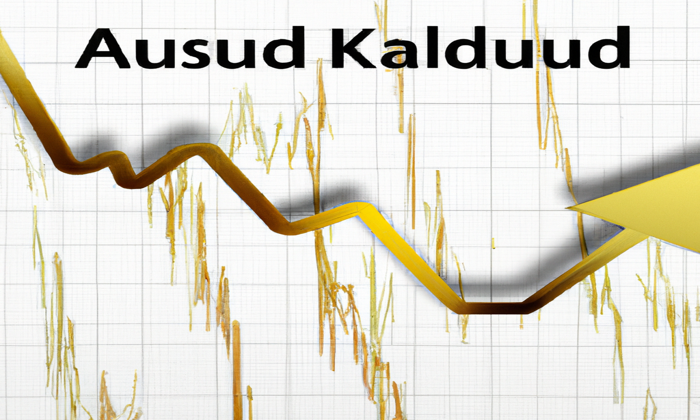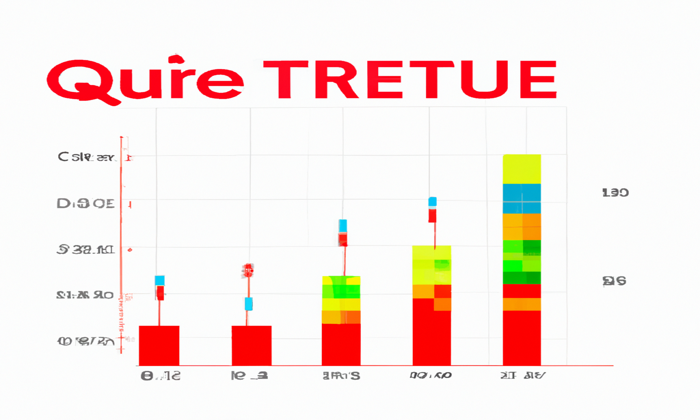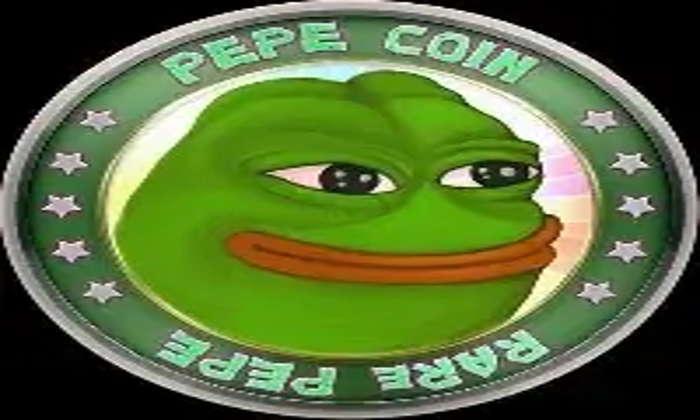The recent downturn in the NFT market is hard to ignore, with NFT sales decline significantly impacting overall trading volumes. In May, sales plummeted by 16.7% to just $105.7 million, highlighting shifts in NFT market trends amid fluctuating crypto valuations. Although this decline is notable, it coincides with a surprising surge in Ethereum sales, which soared by 30% despite the broader downturn. As the crypto market cap also experiences volatility, this juxtaposition raises questions regarding buyer behavior and the future of blockchain assets. Interestingly, while sales have dipped, a substantial increase in NFT transactions and buyer engagement points to shifting dynamics within the market, revealing potential growth opportunities even amidst challenges.
A significant shift is underway in the digital art world, reflecting a decline in sales within the non-fungible token arena. This phenomenon, characterized by a drop in sales activity, has reshaped perceptions of digital collectibles and raised new questions among stakeholders. While transactions have surged, indicating a rise in market engagement, the overall landscape of these unique digital assets is experiencing instability. As trends emerge and evolve, the impact of blockchain technology on consumer interest is becoming increasingly apparent across various platforms. Surprisingly, while some Ethereum sales witness a remarkable leap, other aspects of the NFT ecosystem may be bracing for enduring changes.
Current State of NFT Sales
The NFT sales market has faced a significant downturn recently, with sales plunging by 16.76% to a total of $105.7 million. This drop comes amidst fluctuating Bitcoin prices, which dipped to $103,000 after reaching an all-time high of $111,000 just a week prior. Such declines indicate a period of instability in the crypto assets market, correlating with the broader reductions in global crypto market cap, currently standing at $3.25 trillion, compared to last week’s peak of $3.42 trillion.
Despite this decline in revenue, the NFT space is witnessing an interesting trend with a 55.35% rise in active buyers, reaching 699,471 individuals. This influx of buyers, coupled with a 19.22% increase in sellers, paints a complex picture where the number of NFT transactions surged by 34.31% to over 2.2 million. This rise may hint at a growing community of NFT enthusiasts, contrasting with the overall decrease seen in sales volume.
Ethereum’s Resilience Amidst Market Fluctuations
In a landscape fraught with declines, Ethereum stands out with its sales volume increasing by 28.43%. This surge resulted in $36.5 million in Ethereum sales, showcasing the blockchain’s strength even as the general NFT sales experience significant downturns. As a leading platform for NFT transactions, Ethereum’s ability to retain buyer interest is crucial for stabilizing the NFT market.
Interestingly, although Ethereum’s wash trading dropped by over 23% to $1.6 million, the platform has fostered an environment conducive to organic growth. This resilience may provide optimism among NFT creators and traders alike, encouraging continued engagement in Ethereum-based sales, despite the broader issues affecting the market.
The Rise of NFT Transactions
Notably, while NFT sales overall have declined, the number of transactions has witnessed a thriving increase of 34.31%, highlighting a robust interest in NFT trading. This uptick in transaction numbers points to a more active engagement from the community, which suggests that many buyers are actively participating in the market regardless of the sales revenue decline. The growing number of transactions reflects a potential shift towards a more transaction-driven rather than sales-driven market.
As the trend of increased NFT transactions gains momentum, platforms such as Polygon and Solana are showing significant buyer growth. This diversification among blockchains indicates a shifting dynamic where NFT enthusiasts are not solely dependent on Ethereum but exploring other platforms, contributing to an enriched ecosystem of digital assets.
NFT Market Trends: Buyer Growth Amid Declines
The recent trend of increased buyers in the NFT market is quite remarkable, seeing a 55.35% rise in active participants. Such growth suggests a robust interest and commitment to the space, regardless of the reported fall in NFT sales. This indicates that while the monetary value of sales might be under pressure, consumer enthusiasm for acquiring NFTs is not waning, hinting at potential stability for the long term.
Furthermore, the rising number of sellers, which increased by 19.22%, also contributes to a dynamic market environment. Although the overall sales may have dipped, the growing participation from both buyers and sellers suggests that the NFT ecosystem is adapting and evolving. This growth in the numbers serves as a beacon of hope, especially when combined with the reported increases in NFT transactions.
Bitcoin’s Influence on the NFT Market
Bitcoin’s fluctuating prices have direct implications for the NFT market, particularly after its recent drop to $103,000. As Bitcoin experienced a volatile phase, it also impacted investor sentiment across the crypto spectrum, including non-fungible tokens. This relationship draws attention to how integral Bitcoin’s performance is to crypto market dynamics, where a drop can lead to various cascading effects in NFTs and other assets.
Despite Bitcoin’s decline, NFTs have maintained a certain level of appeal, with a notable growth in engaged users. This situation underscores a critical aspect of the NFT market: its ability to cultivate a distinct identity that can thrive independently of Bitcoin’s pricing trends. Such resilience may indicate a well-established foundation for NFTs, allowing them to endure even amidst broader market fluctuations.
Decreasing Wash Trading in the NFT Market
One intriguing trend is the notable decrease in wash trading within the Ethereum ecosystem, which dropped by 23.31% to $1.6 million. This decline suggests a potential shift towards more genuine trading behaviors among collectors and investors. As the NFT space matures, a reduction in wash trading signals the emergence of a healthier marketplace focused on real value creation rather than mere speculative trading.
This decrease could reflect an increasing awareness among participants about the implications of wash trading on market integrity. By curtailing such practices, the NFT community can enhance its credibility, helping to attract long-term investors who are focused on the intrinsic value of digital assets rather than short-lived profits.
Emerging Trends in NFT Collections
Amidst the sales decline, certain collections have shown remarkable resilience. For instance, Courtyard on Polygon remains a top contender despite experiencing a 13.91% drop in sales. This showcases that while overall volumes may be down, specific collections still hold significant interest for buyers. The ongoing participation and increased seller count suggest a vibrant marketplace surrounding these collections.
Additionally, the emergence of new collections like STRAT Option on Ethereum highlights ongoing innovation in the NFT space. With sales skyrocketing by an astronomical rate of 18,945,794.34%, this collection reflects the dynamic nature of NFT trends where creativity continues to attract attention, paving the way for new players in the market.
Future Outlook for the NFT Industry
Looking ahead, the future of the NFT industry will likely hinge on how well it adapts to ongoing market fluctuations. With a continued influx of buyers and innovation in blockchain platforms like Ethereum, Polygon, and Solana, the NFTs might develop further autonomy as a thriving market. As buyer sentiment evolves, so too will the strategies for purchasing and trading NFTs.
Moreover, the interactions between major cryptocurrencies, particularly Bitcoin and Ethereum, will remain paramount. As these flagship assets dictate market trends, their influence will directly impact buyer engagement within the NFT space. Continuous monitoring of these correlations will be vital for anticipating future shifts and trends in NFT transactions.
Conclusion: Navigating the NFT Landscape
In conclusion, while the NFT market faces challenges with declining sales, the increasing number of buyers and transactions hints at a resilient community that values engagement in digital assets. This complex dynamic offers a nuanced understanding of how NFTs are navigating through market ups and downs.
As the landscape continues to evolve with developments in blockchain technology, market participants will need to remain adaptable. Recognizing the trends that emerge from fluctuations, such as the rising interest in specific collections or platforms, will be essential for anyone looking to succeed in the ever-changing NFT arena.
Frequently Asked Questions
What are the reasons behind the recent NFT sales decline?
The recent NFT sales decline of 16.7% can be attributed to several factors, including the drop in Bitcoin prices from recent all-time highs, which influences overall investor sentiment. Additionally, while the NFT market showed growth in transactions and buyers, the overall sales volume decreased due to market corrections and shifts in consumer interest.
How does Ethereum’s sales surge relate to the NFT sales decline?
Despite the NFT sales decline, Ethereum’s sales surged by 30%, indicating a concentration of purchasing activity within that blockchain. This may suggest that while NFT sales overall are decreasing, Ethereum remains a preferred platform for buyers, highlighting segment trends within the NFT market.
Are NFT transactions increasing while NFT sales decline?
Yes, NFT transactions have increased significantly by 34.31% even as NFT sales have declined. This trend suggests that while individual sales may be lower in value, the number of trades is rising, reflecting a robust interest in NFTs despite the overall sales downturn.
What is the impact of the crypto market cap on NFT sales decline?
The global crypto market cap dropping to $3.25 trillion likely impacts NFT sales decline by decreasing liquidity and investor confidence. When the cryptocurrency market experiences volatility, it can lead to hesitancy in purchasing NFTs, contributing to reduced sales figures.
How has buyer growth in the NFT market influenced the decline of sales?
While NFT sales have declined, buyer growth of 55.35% suggests that more individuals are entering the NFT market. This increase in buyers, however, may not translate directly into higher sales volume, as it could indicate a shift towards lower-priced items or a broader range of purchasing activity.
What trends can we observe in NFT markets despite the sales decline?
Despite the sales decline, notable trends in the NFT market include increased buyer and seller counts, as well as a surge in transactions. These dynamics suggest an evolving market where trading frequency is rising, possibly indicating a healthy demand for NFTs irrespective of top-line sales data.
Is the NFT market likely to recover from the recent sales decline?
Recovery in the NFT market after the sales decline may be possible if Ethereum continues to perform well and if broader crypto market conditions stabilize. Increased blockchain buyer growth and transaction activities could also signal a rebound, helping to restore confidence in NFT valuations.
Which blockchain platforms are maintaining sales despite the NFT sales decline?
Blockchain platforms such as Ethereum are exhibiting resilience, with a 28.43% increase in sales despite overall NFT sales decline. This suggests that specific platforms remain favorable for NFT transactions, indicating varying performance levels across different blockchains.
Can the increase in NFT buyers lead to a future increase in sales despite the current decline?
Yes, the increase in NFT buyers could potentially lead to future increases in sales as these new participants may begin purchasing more expensive or high-value items once they are familiar with the market. This growing interest could eventually help to reverse the current NFT sales decline.
What role does wash trading play in the NFT market during sales declines?
Wash trading in the NFT market, where sales are artificially inflated, decreased by 23.31%. This reduction might indicate a more stable market environment as genuine trading activity increases, potentially leading to a healthier market as it recovers from sales declines.
| Key Point | Details |
|---|---|
| Overall NFT Sales Decline | NFT sales volume decreased by 16.76% to $105.7 million. |
| Ethereum Sales Surge | Ethereum sales rose by 28.43% to $36.5 million. |
| Increase in NFT Buyers and Sellers | The number of NFT buyers increased by 55.35% to 699,471; sellers rose by 19.22% to 242,898. |
| NFT Transactions | NFT transactions surged by 34.31% to 2,233,547. |
| Leading Blockchain | Ethereum leads in sales, followed by Polygon and Mythos Chain. |
| Top Collection | Courtyard on Polygon maintained top position but saw a sales drop of 13.91%. |
| High-Value NFT Sales | CryptoPunks sales reached high values, with top sales between 66 and 150 ETH. |
Summary
NFT sales decline significantly as the market will continue to adjust amid fluctuating cryptocurrency values and changing buyer interests. Despite the 16.7% decrease in NFT sales to $105.7 million, the increase in buyers and transactions indicates a potential shift in the market dynamics. Ethereum’s robust performance amid this decline highlights its resilience and growing buyer base, which could potentially lead to future growth in the NFT space.
The recent NFT sales decline has captured significant attention within the cryptocurrency landscape, revealing a staggering drop of 16.76% to just $105.7 million. This downturn occurs amidst fluctuating market conditions, including a notable surge in Ethereum sales of 30%, indicating unpredictable NFT market trends. While the global crypto market cap has decreased to $3.25 trillion, there’s a paradoxical rise in NFT transactions which increased by 34.31%, suggesting a growing interest among blockchain buyers. Despite the decline in sales volume, the number of unique NFT buyers rose by over 55%, reflecting a dynamic shift in the marketplace. As collectors navigate this evolving environment, understanding both the decline and the accompanying buyer growth could provide insights into the future trajectory of the NFT ecosystem.
In the world of digital collectibles, a noticeable downturn has emerged, commonly referred to as a slump in NFT transactions. This ebb in the market has raised eyebrows, particularly as Ethereum platforms record robust engagement and transaction volumes surge unexpectedly. With the overall valuation of cryptocurrencies taking a dip, alternative metrics such as rising participant numbers indicate a changing dynamic among blockchain enthusiasts. Analyzing these fluctuations offers a glimpse into the nuanced interplay between burgeoning interest in NFTs and the inconsistent valuation trends visible across different platforms. Recognizing these shifts is crucial for stakeholders aiming to navigate through the current crypto landscape effectively.














